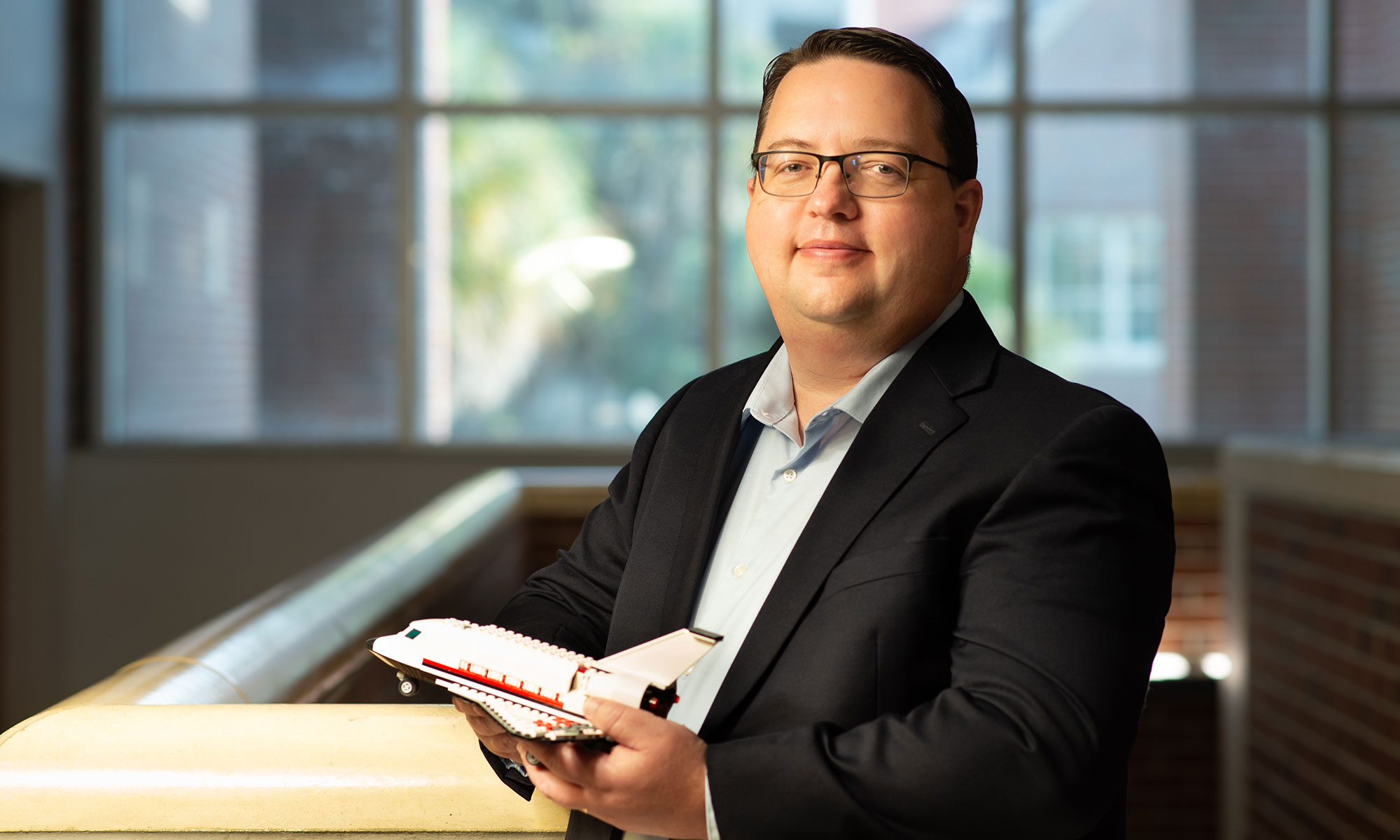“My upbringing is weird,” Tonks said recently from his office at the University of Florida. “My dad worked his whole career at Los Alamos National Lab. Having a Ph.D. and being a scientist was normal. Most of the parents had Ph.D.’s. At the time, it was the highest per capita of Ph.D.’s in the world in that town.”
He knew his dad was a physicist, but because his work was classified, Tonks never really knew what he did.
These days on family visits to Los Alamos, Tonks and his father – who retired in 2012 – talk about equations, sometimes prompting Tonks’ siblings (one a Ph.D. in biophysics) to throw in theories and formulas to stir the numerical chaos. Complex equations are sometimes a part of family gatherings.
Weird? No. This is a logical origin story for an award-winning professor who was promoted to acting chair of the Department of Materials Science & Engineering and whose research is playing a key role in NASA’s quest for a manned mission to Mars as early as 2030.
Literally a rocket scientist, Tonks arrived at UF in 2019 after teaching at Pennsylvania State University for two years. Before that, he served as the leader of the Microstructure Science and Engineering group at Idaho National. His accolades include two UF Faculty Excellence Awards. In 2022, he was honored as a TMS Brimacombe Medalist.
“Dr. Tonks has been an invaluable asset to our college, bringing not only exceptional expertise in the nuclear field but also a profound dedication to advancing research and education,” said Forrest Masters, Ph.D, interim dean for the Herbert Wertheim College of Engineering. “His leadership in the department has significantly elevated our program, fostering innovation and collaboration that resonate throughout the academic community.”
For years, Tonks and his students have been researching rocket propulsion powered by heat from nuclear fission.
“Liquid hydrogen needs to be superheated and expand as fast as possible,” he explained. With the weight of carrying liquid hydrogen on the rocket, Tonks’ mission is to attain the safest and most efficient rocket propulsion.
“We need to get it as hot as possible, so they want to drive this fuel up to 3000 Kelvin,” he said. “That is the maximum temperature, which is half the temperature of the sun. And it’s above the melting temperature of almost all of the material we have, but not all.”
Tonks is seeking a correct mix to power the propulsion but also enhance safety and keep the integrity of the other materials on the rocket amid the nuclear superheat.
“With a power reactor, you need material that can take a lot of changes,” Tonks said.
Tonks’ degrees are in mechanical engineering. He became interested in nuclear propulsion during his seven years working at the Idaho National Lab, where he wrote a research proposal about using the tools developed for power reactors in space reactors at NASA.
Later, he started teaching and researching at Penn State, where NASA gave him $50,000 to prove the proposal was feasible. It was. By the time he started at UF in 2017, NASA was funding the project at a much larger level, he said.
“NASA’s fuel-development program needs a good concept that will operate well. NASA wants to have it all sorted out within 10 years,” Tonks said.
Challenges:
- You cannot duplicate space conditions on Earth, so there is no exact way to test it.
“We can do modeling assimilation (at UF) to start to predict how these materials are going to behave under these harsh conditions,” Tonks said. “That’s the reason this is attractive to NASA. It allows them to make faster development on materials they can’t test yet.”
- How do we guarantee there is enough fuel to operate a reactor all the way to Mars and back. “There was a big focus on fuel loss,” he said.
-
Safety on the ground and in space. A Mars mission will have astronauts exposed to constant cosmic radiation.


